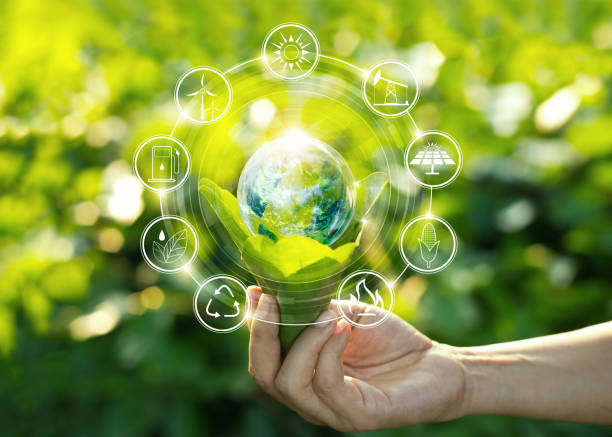Agricultural Outlook: Trends Shaping the Future of Farming

The global agriculture sector is undergoing a transformative shift. As challenges like climate change, population growth, supply chain disruptions, and changing consumer preferences rise to the forefront, the agricultural outlook for the coming years is both complex and promising. Farmers, policymakers, and agribusinesses must navigate a rapidly evolving landscape with resilience and innovation to ensure food security and economic stability.
Understanding the Agricultural Outlook
The agricultural outlook refers to the forecast of trends, opportunities, and potential risks that are expected to influence the farming sector over a given period. These outlooks are typically provided by international organizations, research institutions, and government agencies to help guide strategic decision-making.
A reliable agricultural outlook takes into account factors such as crop production estimates, global trade patterns, commodity prices, weather forecasts, policy changes, technological adoption, and consumer behavior. With better insight into these areas, stakeholders can plan for planting, investment, resource management, and trade negotiations.
Global Demand and Food Security
One of the dominant themes in the agricultural outlook is the rising global demand for food. The world population is expected to exceed 9 billion by 2050, which means agricultural production must increase significantly to meet nutritional needs. At the same time, there is growing demand for more protein, organic produce, and sustainably grown crops, especially in emerging economies.
This demand creates opportunities but also pressure on existing agricultural systems. Land degradation, water scarcity, and a shrinking workforce make it difficult to increase yield through conventional methods. As a result, innovation is no longer optional—it’s essential.
Climate Change and Its Impact
Climate change remains one of the most critical concerns affecting the agricultural outlook. Shifts in rainfall patterns, increased temperatures, and extreme weather events such as droughts, floods, and storms can severely affect productivity. Many regions are already seeing reduced yields in staple crops like wheat, rice, and maize.
To combat these risks, investment in climate-resilient crops, sustainable irrigation techniques, and precision agriculture technologies is increasing. Additionally, the importance of real-time data and weather forecasting tools continues to grow, enabling better preparedness and adaptive strategies.
Technological Innovation in Agriculture
The future of farming is being shaped by digital technologies and automation. Precision agriculture tools, drones, satellite imaging, machine learning, and IoT-based sensors are transforming the way farms are managed. These technologies not only optimize input use but also enhance productivity and sustainability.
The agricultural outlook suggests that smart farming will become the norm, especially in countries with strong infrastructure. However, there is a pressing need to close the digital divide and make these technologies accessible to smallholder farmers in developing nations.
Shifting Trade Dynamics
Global trade plays a pivotal role in the agricultural outlook. The flow of agricultural commodities across borders is influenced by trade agreements, tariffs, and geopolitical tensions. Recent disruptions, such as the COVID-19 pandemic and the Ukraine conflict, have exposed vulnerabilities in the supply chain and led to increased food prices.
Going forward, countries may prioritize food sovereignty and diversify their import sources to mitigate risks. Meanwhile, producers will need to stay agile, explore new markets, and comply with increasingly strict quality and sustainability standards to remain competitive.
Policy and Sustainability Goals
Agricultural policies are evolving to support both economic growth and environmental stewardship. Governments are introducing incentives for sustainable farming practices, organic cultivation, and carbon reduction. International collaborations, like the UN’s Sustainable Development Goals (SDGs), are also influencing agricultural priorities.
The agricultural outlook points to a stronger emphasis on sustainable practices, such as crop rotation, reduced pesticide use, agroforestry, and conservation agriculture. These methods are vital not only for protecting ecosystems but also for ensuring long-term productivity.
Labor and the Future Workforce
A shrinking and aging rural workforce presents another challenge. Younger generations are often reluctant to enter farming, preferring urban employment opportunities. This labor gap may be addressed through automation and increased mechanization, but also requires investment in education, training, and incentives for youth participation in agriculture.
Empowering women and marginalized communities with access to land, finance, and education is another way to strengthen the agricultural workforce and boost resilience.
Conclusion
The agricultural outlook for the future is one of both challenges and incredible opportunities. Climate change, technological transformation, market dynamics, and evolving consumer expectations will continue to reshape the industry. However, with strategic investments, inclusive policies, and a focus on sustainability, agriculture can rise to meet the demands of a growing world.
Farmers and agribusinesses that stay informed and agile will be best positioned to thrive in this new era. As global collaboration and innovation continue, the agricultural outlook remains a powerful tool for guiding the future of farming toward a more secure and sustainable tomorrow.